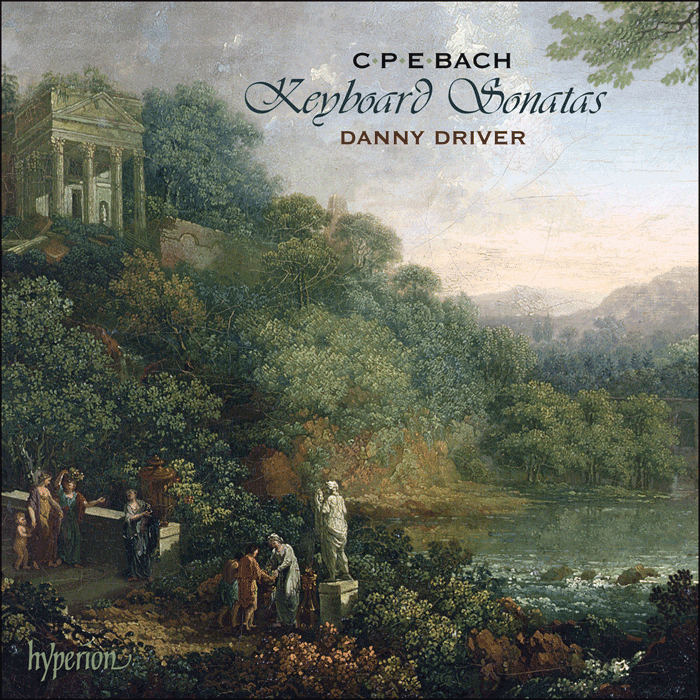Logowanie
Mikołaj - ten to ma gest!
Elton John, The Mamas & The Papas, Cat Stevens, Rod Stewart, Bobbie Gentry, Stevie Wonder, Engelbert Humperdinck
Memory Lane
Edycja Numerowana - 1000 egzemplarzy w skali światowej
RACHMANINOV, Eiji Oue, Minnesota Orchestra
Symphonic Dances / Vocalise
Best Recordings of 2001!!! NAJCZĘŚCIEJ KUPOWANA PŁYTA Z RR!
Karnawał czas zacząć!
Music of Love - Hi-Fi Latin Rhythms
Samba : Music of Celebration
AUDIOPHILE 24BIT RECORDING AND MASTERING
CHOPIN, LISZT, DEBUSSY, DVORAK, Gerhard Oppitz
Dances romantiques - A fantastic Notturno
Wzorcowa jakość audiofilska z Clearaudio
Winylowy niezbędnik
ClearAudio
Double Matrix Professional - Sonic
najbardziej inteligentna i skuteczna pralka do płyt winylowych wszelkiego typu - całkowicie automatyczna
Carl Philipp Emanuel BACH, Danny Driver
Keyboard Sonatas
- Sonata in G minor, H47 Wq65/17
- 1 Movement 1: Allegro [5'59]
- 2 Movement 2: Adagio [4'32]
- 3 Movement 3: Allegro assai [4'55]
- Sonata in A major, H29 Wq48/6
- 4 Movement 1: Allegro [7'22]
- 5 Movement 2: Adagio [4'29]
- 6 Movement 3: Allegro [7'27]
- Sonata in B flat major, H25 Wq48/2
- 7 Movement 1: Vivace [5'51]
- 8 Movement 2: Adagio [4'01]
- 9 Movement 3: Allegro assai [3'02]
- Sonata in C minor, H27 Wq48/4
- 10 Movement 1: Allegro [6'48]
- 11 Movement 2: Adagio [4'26]
- 12 Movement 3: Presto [2'45]
- Sonata in E flat major, H50 Wq52/1
- 13 Movement 1: Poco allegro [8'15]
- 14 Movement 2: Adagio assai [4'55]
- 15 Movement 3: Presto [3'05]
- Danny Driver - piano
- Carl Philipp Emanuel BACH
The pianist Danny Driver has garnered the highest possible praise for his two York Bowen discs on Hyperion. Now, demonstrating his extraordinary versatility, he turns to a composer from a very different age—yet one who has been similarly overlooked by the musical establishment, while always having a place in the heart of connoisseurs of arcane keyboard music. Carl Philipp Emanuel Bach (1714–1788), second son of Johann Sebastian, was both revered and criticized by his contemporaries for his bold departures from conventional modes of musical expression. He perfected a highly original and intensely personal compositional style known as the empfindsamer Stil (literally, the ‘sensitive style’). As the works on this recording show, Bach’s approach to musical expressiveness found voice in frequent mood changes, abundant rests and ‘sighing’ motifs, the juxtaposition of contrasting rhythmic figures, deceptive cadences, and dramatic, rhetorical harmonic interjections. Bach became particularly renowned for his ability to improvise fantasias—seemingly free-form, stream-of-consciousness flights of fancy characterized by unmeasured rhythm and distant harmonic excursions. Yet underlying even the most improvisatory of his compositions is a coherent structure. Emanuel Bach’s music breaks dramatically away from, yet also builds upon, the early eighteenth-century style perfected by his father. His compositions mark one of the first—and among the most inspired—repudiations of the baroque aesthetic, in which a single unified mood dominates each movement. Emanuel Bach composed more than three hundred keyboard works during his lifetime—all of the works on this recording were composed during the 1740s, while in the service of King Frederick II of Prussia.





























